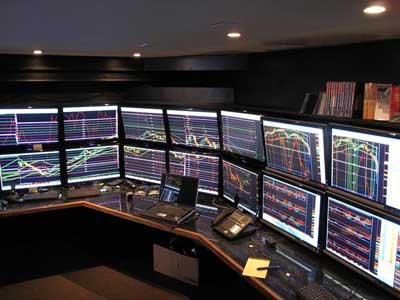 Among the Wall Street elite, a day trader is one of the most recognized professionals operating within the vast financial field. So, what is a day trader? Do you have what it takes to become a successful one? A mix of the right physical and mental traits are imperative to effectively assume the position. If you are interested in pursuing such a career, read on further as we discuss a day trader’s everyday work.
Among the Wall Street elite, a day trader is one of the most recognized professionals operating within the vast financial field. So, what is a day trader? Do you have what it takes to become a successful one? A mix of the right physical and mental traits are imperative to effectively assume the position. If you are interested in pursuing such a career, read on further as we discuss a day trader’s everyday work.
The Matrix of Day Trading
First, what is trading? In its most basic form, trading is the transaction of either buying or selling a product between two parties, with the price negotiated beforehand. In earlier times, this process was widely known as bartering and would take place with the buyer negotiating face to face with the seller.
Today trading can be done via phone or internet. In fact, the exchange pits that were once buzzing with the roars of floor traders have gradually been reduced to a measly sum. Traders are now buying and selling financial products via online-based platforms their brokers offer.
This said, a day trader can be viewed as someone who buys and sells products on a daily basis. You are considered a day trader if you only open positions at the start of a trading day and close it at the same day before the markets close. The number of trades made can vary from one to three trades.
Implications of Day Trading
Day trading, similar to other trading styles, have its own pros and cons. For example, because positions are closed intraday, the trader does not expose his/her positions to overnight risk. This means he/she is able to maximize profits or minimize losses, depending on the held position.
There are certain restrictions, unfortunately. If you are planning to day trade stocks, brokers require minimum capital of $25,000, which could deter aspiring traders with low funds. If you are fine with transitioning to another financial market like foreign exchange, you can trade on a daily basis with just a few hundred dollars on your account.
How Day Traders Approach the Market
Majority of day traders, regardless of market niche, use intraday charts to generate buy or sell signals. Hourly and four hour charts are the favored time frames as they condense price action into one simple visual representation of what the markets did for that specific period of time. It also cuts insignificant price action or whipsaws from shorter time frames.
In the past, fundamental analysis was the only way to logically decide what and when to buy or sell. Now, technical analysis is as popular as its counterpart. Reading the tape or following the trend is one of the most commonly used ways to trade by technical enthusiasts. Others have learned to wield a mix of technical indicators like Stochastics, moving averages, and MACD.
Related Resource: Financial Analyst
Is it profitable? This is another common question attached to what a day trader is, and sadly there is no way to answer it correctly. Day trading success relies on many factors including ability to manage risk, sound technical and fundamental analysis, and the best work ethics that incorporate discipline and patience. If you have serious plans on becoming a professional day trader, it is best to begin learning the ins and outs first from reputable sources like Babypips for day trading currencies and Investopedia for basic strategies on different markets.
